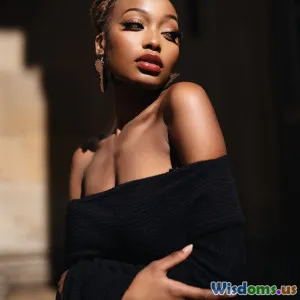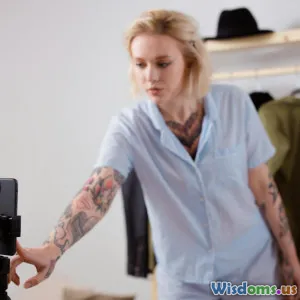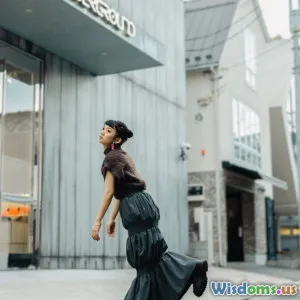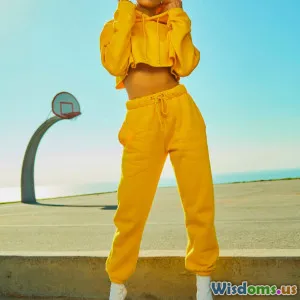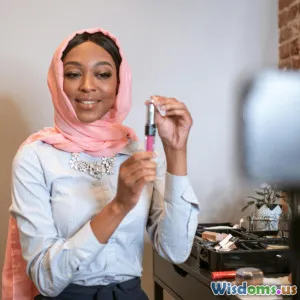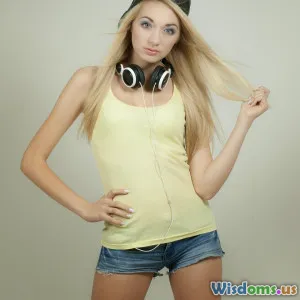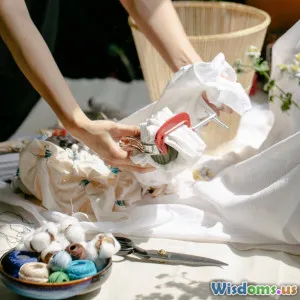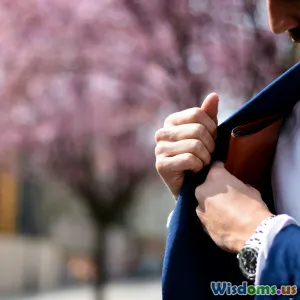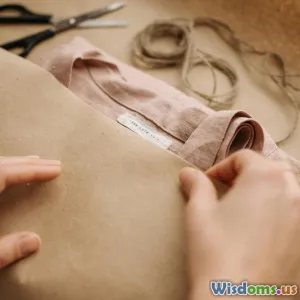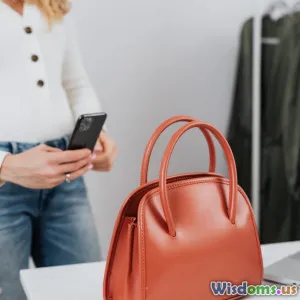
Top Five Surprising Partnerships Between Fashion Bloggers and Luxury Brands
8 min read Discover five unexpected collaborations between fashion bloggers and luxury brands that transformed the industry. (0 Reviews)
Top Five Surprising Partnerships Between Fashion Bloggers and Luxury Brands
Introduction
In the ever-evolving world of fashion, collaborations between luxury brands and style influencers have become a pivotal strategy to capture emerging markets and fresh trends. While partnerships with established celebrities have been long-standing, the rise of fashion bloggers introduced a new dynamic to luxury marketing approaches. What is truly surprising, however, are the unexpected collaborations between some of the biggest luxury houses and relatively fresh-faced bloggers who have turned the industry on its head. These partnerships not only disrupted traditional advertising but redefined authenticity, customer engagement, and content creation in fashion.
This article explores five such remarkable collaborations—relationships that forged new pathways for communication between luxury fashion and its increasingly digital clientele—shaping trends and consumer behavior globally.
1. Chiara Ferragni and Dior: The Digital Fashion Icon's Foray into Haute Couture
Chiara Ferragni, often crowned as the queen of fashion blogging, partnered with Dior in a campaign that crowned her not as just an influencer but a muse. This partnership was surprising because Dior traditionally maintained exclusivity with seasoned models and celebrities. In 2017, Ferragni debuted as the face for Dior’s collection, combining the blogger's relatable persona with the brand's heritage.
The collaboration was significant as Ferragni’s Instagram alone boasted over 12 million followers at the time, giving Dior unprecedented direct access to younger consumers. Data showed that Dior's relevant online engagement increased by approximately 40% following the campaign, illuminating the successful fusion of blogger influence with luxury brand legacy.
Chiara Ferragni stated in an interview, “This partnership felt like bridging two worlds; the new age of fashion communication with tradition.”
2. Aimee Song and Gucci: From Blog to Runway Partnership
Long before the Gucci collaboration, Aimee Song had built a formidable blogging presence with Style Song, gaining credibility through her fashion insight and photographic style. Gucci’s creative director, Alessandro Michele, known for embracing eclectic digital culture, brought Song into the fold for their Instagram campaign and product launches.
This partnership was surprising because Gucci’s brand image historically centered on avant-garde artisanal craftsmanship rather than influencer-led marketing. Yet, Song’s ability to illustrate Gucci's vision with authenticity in her posts expanded the brand’s reach. According to Gucci’s reports, collaborations with digital creators like Song helped increase millennial and Gen Z engagement by 30% in key markets.
Song’s specific protagonism in Gucci shows alongside formal fashion week presentations in 2019 highlighted the blending of digital influencer and traditional runway roles, a trend hardly envisioned just a decade ago.
3. Bryanboy and Balmain: The Blogger Turned Collaborator
Balmain’s relationship with Bryanboy, a Filipino blogger famed for his flamboyant style and sharp commentary, exemplifies a different approach to collaboration. Instead of merely acting as a brand ambassador, Bryanboy co-created elements within collections and marketing strategies.
Balmain’s creative director Olivier Rousteing invited Bryanboy not only to their runway shows but also to participate in campaign creation. The exclusivity of such honors for a blogger was a landmark in the traditional couture world. Fashion experts credit this with catalyzing Balmain’s success among diverse youth demographics, leading to a reported 25% surge in social media engagement in 2016 alone.
This collaboration highlights how luxury brands could identify cultural relevance through bloggers, turning critics into key assets.
4. Patricia Bright and Louis Vuitton: From Vlogging to Luxury Collaborations
Patricia Bright, known primarily for her beauty and lifestyle YouTube channel, took an unexpected leap when Louis Vuitton invited her for a series of exclusive events and mini-campaigns focused on lifestyle integration rather than just fashion.
Louis Vuitton’s strategic move to embrace a beauty vlogger was surprising as it showed the brand's intent to diversify connections beyond traditional fashion bloggers, blurring sector lines between beauty, lifestyle, and high fashion. Viewership data suggested a 15% increase in Louis Vuitton related searches among lifestyle YouTube viewers after these collaborations.
Bright reflected, “Collaborating with Louis Vuitton wasn’t just about fashion; it was about knowing the narrative and lifestyle of today’s consumers in a holistic way.” The partnership opened luxury fashion to broader demographic inclusivity.
5. Chriselle Lim and Chanel: Redefining Luxury Storytelling
Chriselle Lim, a Korean-American stylist and fashion blogger, partnered with Chanel in a campaign celebrated for its storytelling depth. Unlike conventional image-focused approaches, the project featured vlog-style narrative videos that revealed behind-the-scenes creation processes of Chanel’s haute couture.
What made this partnership surprising was Chanel’s traditional resistance to “digital-style” humility merged with luxury exclusivity. Lim’s creative perspective on content production brought a fresh, dynamic storytelling approach that attracted millions of social media impressions globally.
This innovative collaboration shows how progressive tech-enabled narratives shape modern luxury experiences, breaking down the walls between consumers and brands.
Conclusion
The top five surprising partnerships between fashion bloggers and luxury brands reflect a profound shift in how the fashion landscape functions. These collaborations underscore the importance of authenticity, storytelling, and digital presence in modern luxury marketing. By embracing the dynamic influence of bloggers, luxury brands have not only expanded their reach but also renewed their relevance in a digital-first age.
These partnerships inspire upcoming bloggers and brands alike to explore creative synergies and challenge traditional market boundaries. Whether it’s through co-creation, storytelling, or new audience engagement tactics, the fusion of fashion blogging and luxury branding promises to remain a fertile ground for innovation.
As consumers increasingly demand transparency and connection, expect future collaborations to become even more integrated and surprising, continuing to transform the luxury fashion industry in fascinating ways.
References:
- Dior Corporate Reports, 2017-2018
- Gucci Millennial Engagement Report, 2019
- Balmain Social Media Analytics, 2016
- YouTube Viewer Trends Analysis, 2020
- Chanel Marketing Case Studies, 2021
Rate the Post
User Reviews
Popular Posts










